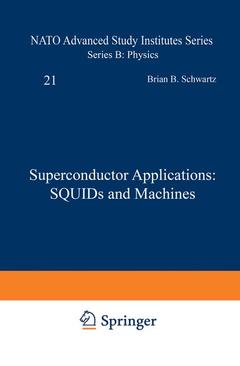This book includes small and large scale applications of super conductivity. Part I, SQUIDs, comprises about 75% of this volume, and is devoted to small scale applications, mainly .§uperconducting QUantum Interference Devices (SQUIDs), and the remainder, Part H, Machines, presents an updated review of large scale applications of superconduc tivity. The present book combined with the previous book Superconducting Machines and Devices: Large Systems Applications edited by S. Foner and B. B. Schwartz, Plenum Press, New York (1974) represents a detailed and most up-to-date review of the applications of superconducting tech nology. The text of the current book is suitable for advanced undergrad uates or graduate students in applied physics and engineering courses. The book should be valuable to scientists, engineers and technologists interested in the current status and future applications of superconduc tivity technology. The last 7 chapters in Part I review the major nation al efforts on small scale technology and should prove useful for industrial and government planners as weIl as scientists and engineers.




